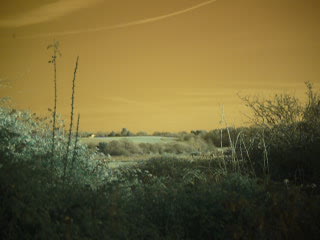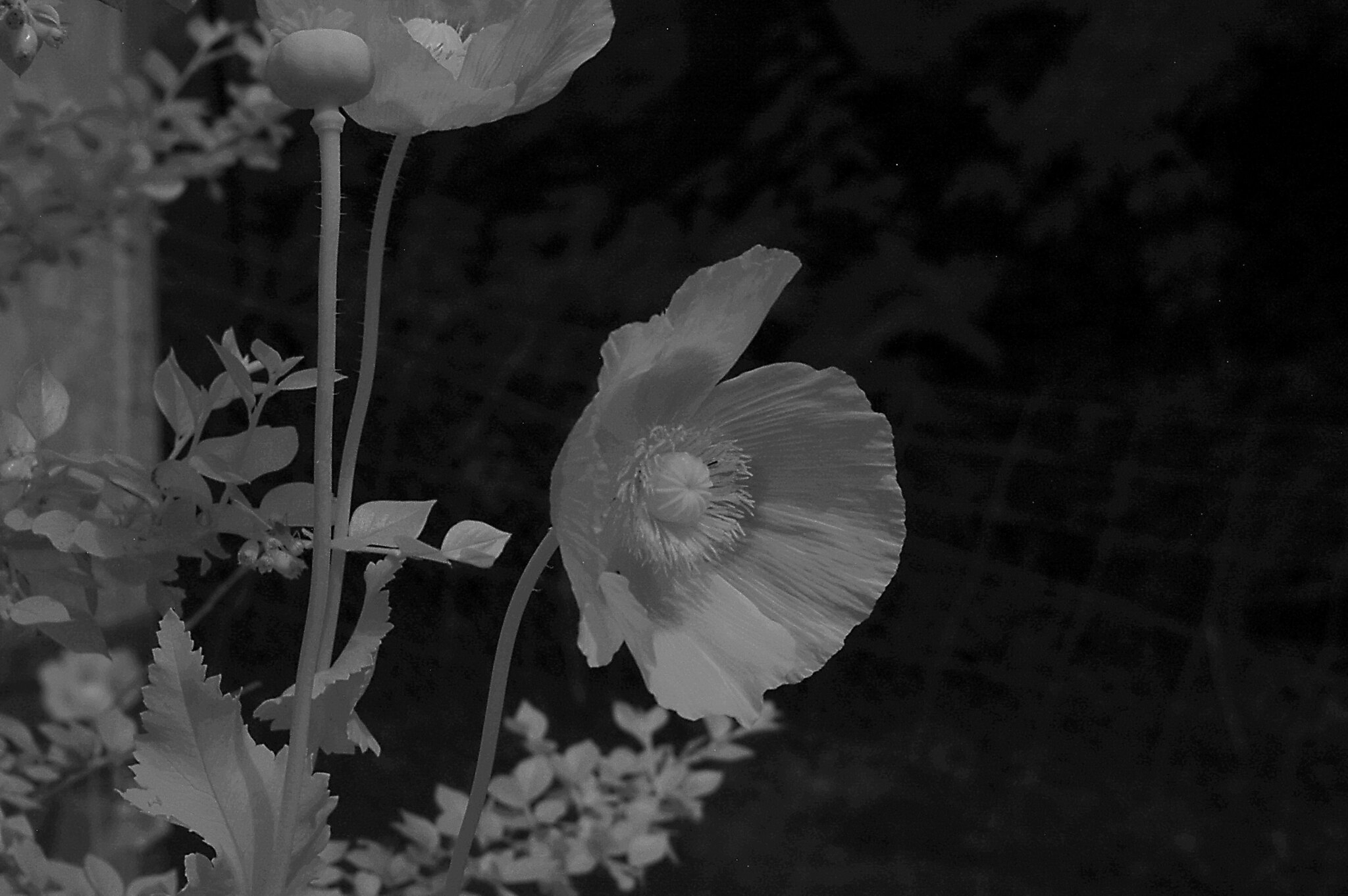I wanted to start this thread to call out filters that don't do what they claim like this one, which claims to be an adjustable IR-pass filter for wavelengths between 530-750nm.
I've tested this filter on both film and digital (the latter is not IR converted) and I don't see the characteristic bright foliage effect at any setting.
I was sceptical when I purchased it and my suspicions were correct. It's nothing more than an orange coloured variable ND filter.
Has anyone else discovered any fake or counterfeit IR filters?
-
-
How to test them without laboratory tools?
-
It's true, it would be better to test this with a spectrophotometer, however, IR photography has a very distinctive look that can't be replicated in photoshop.
See the links to other threads for black and white infrared photography and colour IR.
Notice that the foliage on trees are completely white. This is because foliage reflects infrared light which is captured by the camera. Even digital cameras that aren't converted for IR still have enough bleed-through (for want of a better description) of IR light that with an appropriate filter and sufficiently long exposure, you can still see the IR "effect" on foliage. (apologies if you already know all this)I'm not seeing this with my tests either on digital or IR sensitive film.
Here are shots with an regular digital camera with the the filter. (colour and converted to black and white)
these are the shots with photographic film
filter at "530nm"
Although I'm not using film that's labeled as infrared, it is sensitive to those wavelengths as shown by the spectral sensitivity curve below so I should be getting white foliage and dark skies with this filter and film combo.
If you are using this filter and your getting the infrared effect then I'd love to know how your achieving it. I've tried taking shots with the sun high in the sky and late afternoon. White balancing for the filter and using auto white balance (for the digital shots). Photographing different types of plants and trees just in case some reflect more IR light than others. And as shown, trying digital and photographic film. There's no situation where I can get the foliage to look like true IR images. My only conclusion is that this "adjustable IR-pass filter" is actually a variable ND filter with a heavy orange cast and people should steer clear of it unless they want photos that look like they were shot on Mars.
-
I have one of those filters & have been able to test it using a high grade laboratory spectrometer.
In effect it is, as you expected, a #25 (red) filter combined with a variable ND filter.
Below ~600 it has fairly minimal transmission, between 600 & 850nm the transmission varies with the position of the control & above 850 there is pretty good transmission. Note the line showing transmission down to 400nm is a normal variable ND filter.It isn't quite the 'variable wavelength' mine was sold as, but the degree of visual red character can be controlled as a block.
Neither of your test cameras are IR cameras so it's not surprising its not worked!
Here is a crude test video of the filter being used on a full spectrum camera, covering the full range of movement.
 P1130381 Var IR by Mike Kanssen, on Flickr
P1130381 Var IR by Mike Kanssen, on Flickr -
The trace actually reaches effective zero before 750nm (1/1000 of the sensitivity at 350nm reached at 730nm & its dropping very fast) so doesn't show IR even to the degree our eyes do.
Several early types of digital cameras are reasonably IR sensitive without conversion, Nikon's D70 & the Pentax K100d are popular examples, which might show some IR character with these filters, but even these will probably get little IR with this filter. Both will get IR with a R72 filter and can just about be hand holdable.The filters are very definitely intended for modified cameras.
Digital cameras with stronger internal cut filters (hot mirror) require much stronger attenuation of the visible portion to overcome the hot mirror - with a R72 filter & LONG exposures IR results can be achieved.
-
Would this be recommended, though? It doesn't sound as such. Is there a better version of one of these?
-
Early DSLRs had a weak IR blocking filter which could cause bloat as more than just the visible light was recorded .
Some bridge cameras were like this as well .
I have a Minolta DiMage 7 that had a very weak IR blocking filter and with a 720nm , or better still B&W's 092 ( about 695nm ) filter attached , decent IR images could be recorded .
My Sony a100 could just about be used , but wasn't worth the effort .Later cameras have much stronger hot mirrors to prevent this . By later , I'm refering to cameras made over 12-15 years ago .
My Sony a900 and later cameras are totally blind to infrared light .Hardly a surprise you haven't had good results . In your case your filters just acting like an ND filter with a colour caste .
I've converted several cameras to IR or full spectrum . Several Nikon d70's for other people, a very simple job . I've a Sony NEX 3 in full spectrum , an NEX 3C in 720nm IR and converted a 3F for a friend .
When I get chance I'm converting a NEX 6 to make use of it's EVF .
LCD screens on a sunny day are a PITA!Regards IR film , I find only Rollei IR 400 gives good results , I use it in 135 , 120 and 5"x4" LF film .
The Ilford SFX isn't as good , as in not as sensitive.
The rest of the film available has little to no IR sensitivity so it comes as no surprise that you haven't caught an infrared image !There is another film on the market that uses a similar stock to the Rollei , but I forget it's name . It's possible to use that and get similar results with a bit more effort .
Maybe try it again after you buy some Rollei IR film , or buy a converted digital camera .
Regards the filter itself , I have doubts about the quality of these filters but have specific filters for my use that give me the results I want .
If you want to test your digital camera for IR sensitivity, in a dark room point your camera at the end of your TV remote control .
Press and hold one of the controllers buttons , volume etc , while photographing the end of it .
If the cameras IR sensitive you will record the IR emitter glowing on the controller.
If not , forget it . -
If course it's recommended , it's not just recommended, it's essential !
If your camera or film isn't sensitive to infrared light , it can't capture it .It doesn't matter what filter you put on the lens , your camera can only capture the light it sees .
-
I purchased a cheap Green.L brand 720nm filter on Amazon a few years back when I decided to check out IR. It never worked very well, and at the time, I didn't understand much about IR. I put it away and in the issuing years had a Canon Powershot G12 converted to 520nm. I have been playing with it for a while. The other day when I decided to pull that filter out again. It appears to be nothing more than a deep red filter. I can see right through it, and when taking photos with my unconverted Canon G1x, it does not produce any IR effect. Trees are still dark, and exposure is near normal as if I were using a red filter. I did check the G1X with a remote to see if it saw IR light, ad it does. That being said, using it with my 590nm converted Powershot G12 produces some wonderful IR results. I have no "real" 720nm filter like a Hoya to check it against, but from what I understand, that should be just about opaque. The info on Amazon says nothing about using it with a "Conveted" camera. Now the listing only shows 680nm and 950nm filters. Some reviews say it works great, others say that it's nothing more than a red filter.
-
Lots and lots of fake SD cards and filters on Amazon. If a deal seems too good to be true, it probably is.
-
@royphotog has written:
I purchased a cheap Green.L brand 720nm filter on Amazon a few years back when I decided to check out IR. It never worked very well, and at the time, I didn't understand much about IR. I put it away and in the issuing years had a Canon Powershot G12 converted to 520nm. I have been playing with it for a while. The other day when I decided to pull that filter out again. It appears to be nothing more than a deep red filter. I can see right through it, and when taking photos with my unconverted Canon G1x, it does not produce any IR effect. Trees are still dark, and exposure is near normal as if I were using a red filter. I did check the G1X with a remote to see if it saw IR light, ad it does. That being said, using it with my 590nm converted Powershot G12 produces some wonderful IR results. I have no "real" 720nm filter like a Hoya to check it against, but from what I understand, that should be just about opaque. The info on Amazon says nothing about using it with a "Conveted" camera. Now the listing only shows 680nm and 950nm filters. Some reviews say it works great, others say that it's nothing more than a red filter.
I'm lucky enough to have access to a research grade spectrometer that covers the full range recordable by modified cameras (not the special thermal cameras though). My Green L brand 720nm filter fairly closely matches the spectra of a proper Hoya R72 (I have a small one of those too). I don't think the optical quality is as good, but it's not an order of magnitude different.
This poppy photographed back in 2010, would have been shot via a cheap chinese filter on a reasonable IR sensitive stock camera:
 Infra Red flower by Mike Kanssen, on Flickr
Infra Red flower by Mike Kanssen, on Flickr
I suspect it was the rocolax brand 720nm filter which (when I tested it around ten years ago) transmitted ~10% at 680nm, ~50% at 700nm (which strictly speaking makes it a 700nm filter) & about 90% above 750nm. In the visual region I could get 0.04% transmission at 600nm, but nothing effectively above noise further down.
If you use this on a camera that has no IR sensitivity it will behave like a very dark red filter, something like a red filter stacked with a 10 stop ND.





